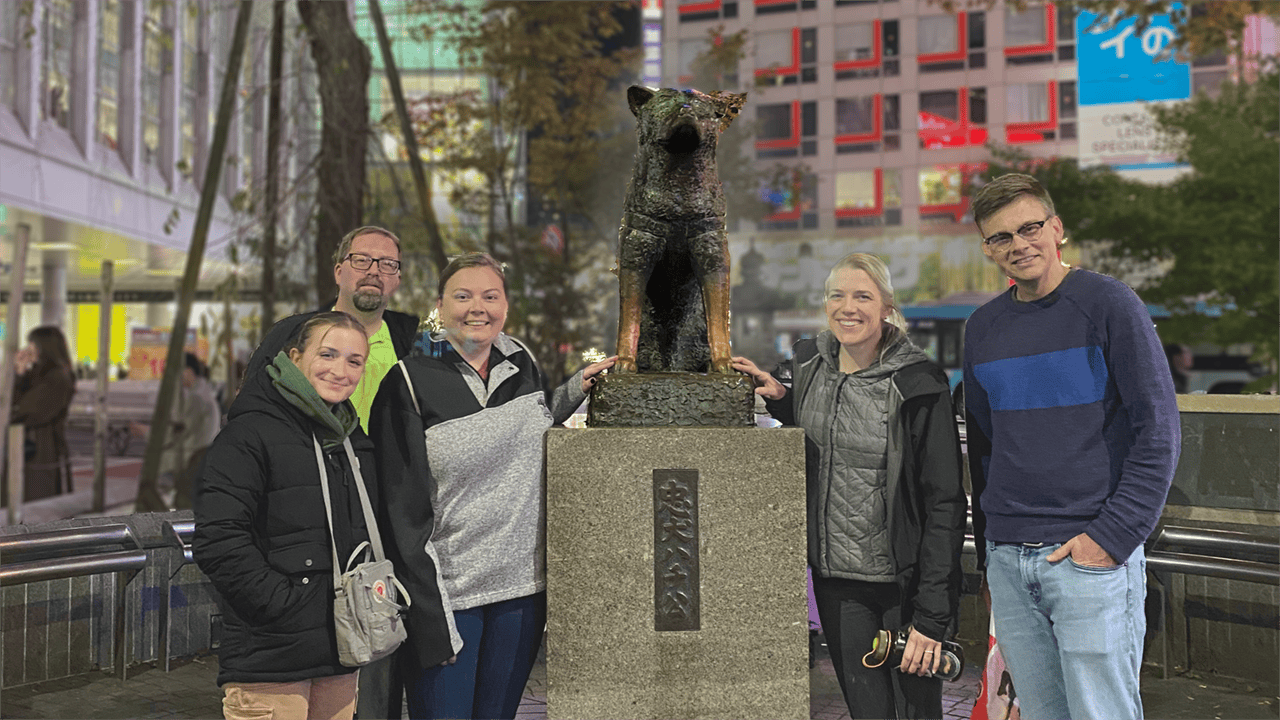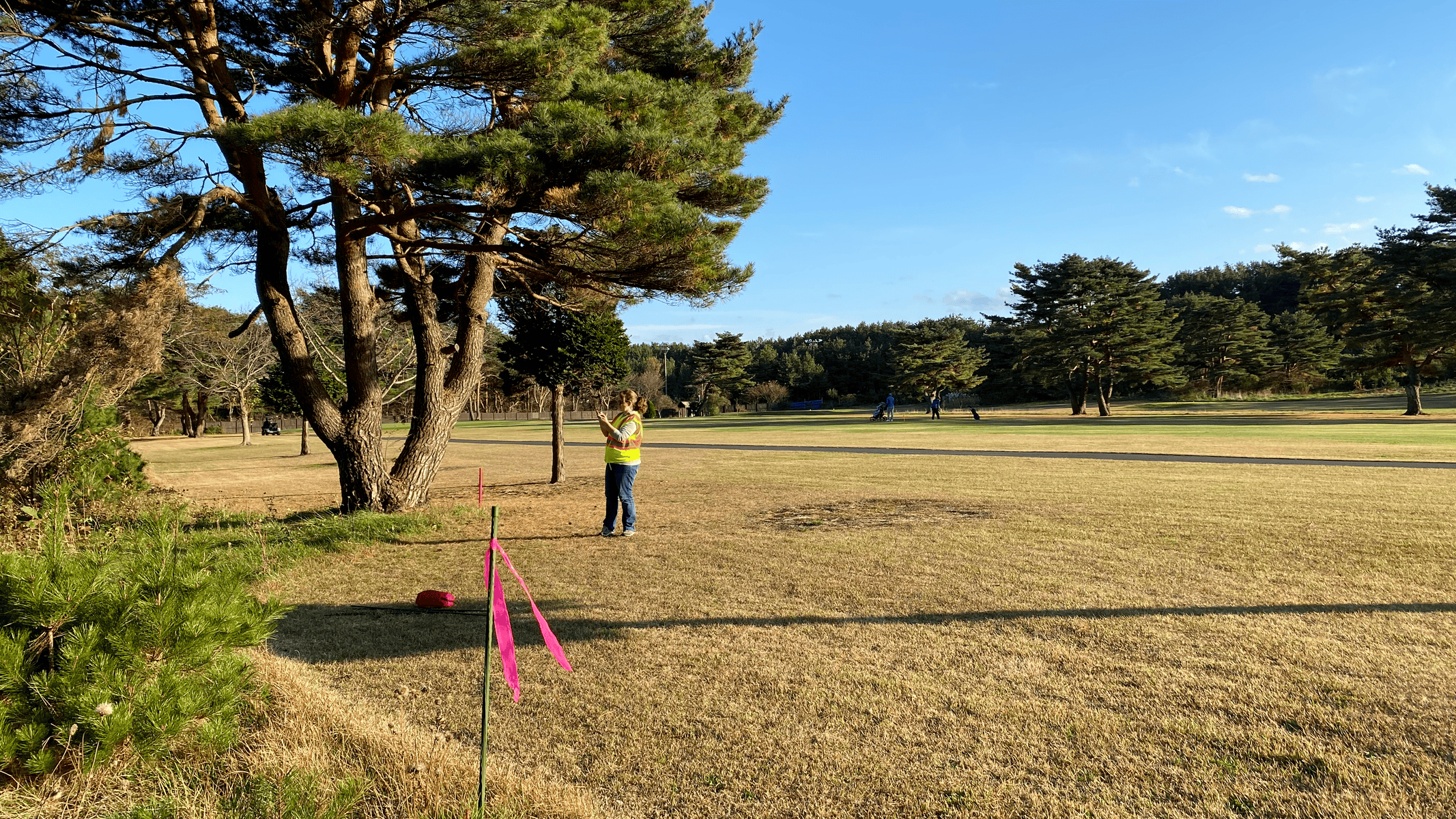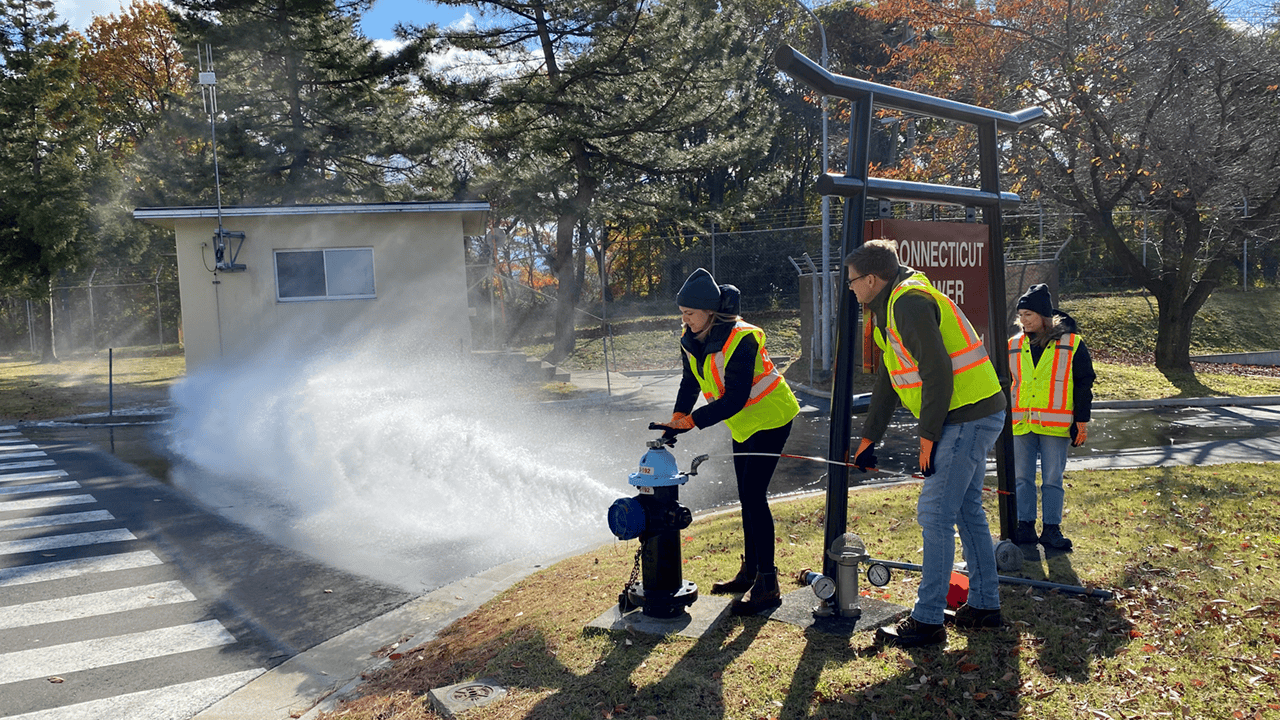Q&A
The OESC Group of Companies: Insight into transitioning from student to OTIE and sharing
the experience of an overseas project
Meet Rachel Mehail.

“I decided to push myself into a new environment where I didn’t know the local language and had to learn a whole new set of tasks.
This push to take on something so unfamiliar led to so much fun.”
It’s not often that, as a new graduate, and within one week of being hired, you are asked, “Are you interested in going to Japan for a project?” What was your reaction?
Of course, I said yes! This kind of opportunity does not come around every day. As a new employee, I only knew one other team member. I decided to push myself into a new environment where I didn’t know the local language and had to learn a whole new set of tasks. This push to take on something so unfamiliar led to so much fun.
Being so new to the project, what was your role?
My role was testing fire hydrants. The reason for the testing was to record pressure data that would be later used to calibrate a hydraulic model of the distribution system. This hydraulic model is being created due to the fire suppression systems on the base being converted from foam type to water-only type systems. This conversion requires an additional check that the existing distribution system is capable of providing enough water to meet new fire flow requirements.
I also attended in-briefings and out-briefings, learning the standard procedure of those. During the hydrant testing, we were not allowed to use walkie-talkies on site. Instead, I learned routine lingo/verbiage in order to communicate clearly via the telephone. Even though we had our phones, we were not able to take photos or videos to help with explanation. Before leaving for Japan, the team and I watched instructional videos and were briefed on the project, which helped me prepare.
It would be interesting to hear how you were inspired or motivated to explore this field of work. Were you always interested in engineering as a career choice?
Growing up, I was introduced to music at an early age and played clarinet, guitar, and piano. Thanks to my mom’s encouragement, I still play piano today and am an accompanist for the Milwaukee Ballet School & Academy part-time. It’s nice to have a place to shut the tech off and use a completely different side of my brain. I can do tech during the day and am creative with my music at night.
When it came time to decide on a career choice, my dad, who is a Mechanics Engineer with a specialty in Aerospace, recommended that I try Civil Engineering. It was in my Introduction to Civil Engineering/Infrastructure class that I learned about different disciplines. There I realized I enjoy water engineering, water resources, and stormwater management. I also discovered that I enjoy design, technical writing, and persuasive communication, so I added a marketing minor during my sophomore year. It is so valuable to be able to communicate engineering concepts clearly to varying target audiences.
Did you have any kind of internships or previous job experience before joining Oneida ESC Group and OTIE?
Yes. My first internship was in California, where I shadowed a Senior Civil Engineer. That experience helped me to confirm my career choice. My second internship was at MMSD where I was the Private Property Infiltration and Inflow Intern. I was actually on a team that OTIE currently works with for various projects! The three key things that I learned there were leaky lateral repair techniques, green infrastructure installation, and homeowner communication. I was also introduced to the Pipe Check Hotline and the Outreach Program, where I talked with homeowners about green ideas and answered their questions.
It’s exciting that you were encouraged to tour the local area while you were in Japan. Are there any experiences you’d like to share?
The food was great! The sushi and ramen were absolutely delicious. The detailed infrastructure was so beautiful; Manhole covers that could have been plain had beautiful, unique designs on them. The team and I were able to visit Shibuya where we saw the Shibuya dog statue. There is a cultural story of the Shibuya dog. The dog, named Hachiko, learned which train station his owner went to when he went to work every day, and every day Hachiko would meet his owner at the train station after work. One day, the man died at work and didn’t come home. Hachiko ran back to the station every day hoping to see him. This cultural story about loyalty became part of the infrastructure when a statue of the dog was placed at the sight where he would wait for the owner.
Is there anything else you’d like to share?
Yes. I want to thank everyone who has been so nice, welcoming, and reassuring, especially in such an unfamiliar place with unfamiliar tasks. I was glad that my freshness was understood so that someone else could lead and I could follow. I was still able to take my own steps knowing that I had a safety net if needed. It was very gratifying to learn and grow and I am very grateful for the opportunity and experience.
” It is so valuable to be able to communicate engineering concepts clearly to varying target audiences.”















